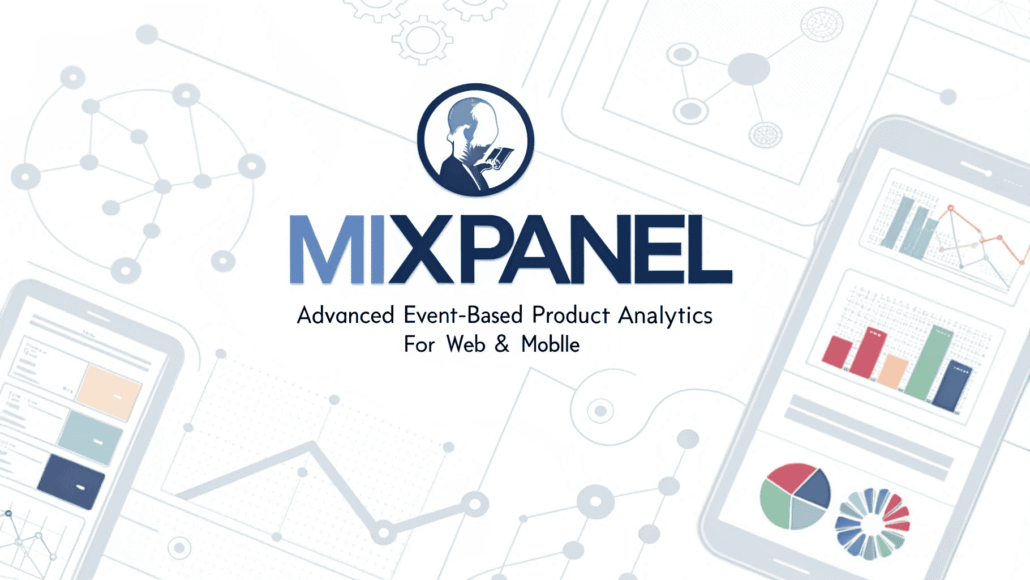
Product teams across the globe face a constant challenge: understanding how users truly interact with their applications. Traditional analytics tools often fall short when it comes to tracking specific user actions and behaviours. This is where Mixpanel shines as a sophisticated event-based analytics platform designed specifically for product teams who need granular insights into user behaviour.
Mixpanel transforms how businesses understand their users by focusing on events rather than page views. This approach provides deeper insights into user journeys, feature adoption, and conversion patterns across both web and mobile applications. Whether you’re a startup looking to validate product-market fit or an enterprise seeking to optimise complex user funnels, Mixpanel offers the analytical depth required to make data-driven product decisions.
This comprehensive guide explores Mixpanel’s core capabilities, implementation strategies, and how it compares to other analytics solutions. You’ll discover how event-based tracking can revolutionise your product development process and learn practical approaches to implementing Mixpanel effectively within your organisation.
What Makes Mixpanel Different from Traditional Analytics
Most analytics platforms focus on page views and session data, providing a surface-level understanding of user behaviour. Mixpanel takes a fundamentally different approach by tracking discrete events that users perform within your application.
Event-Based Tracking Explained
Events in Mixpanel represent specific actions users take, such as clicking a button, completing a purchase, or sharing content. Each event can carry multiple properties that provide context about the action, the user, and the environment when it occurred.
For example, a “Video Played” event might include properties like video duration, user subscription type, device used, and geographical location. This granular data enables product teams to segment users effectively and understand precisely how different user groups interact with features.
Real-Time Data Processing
Unlike traditional analytics tools that may have reporting delays, Mixpanel processes events in real-time. This capability proves invaluable during product launches, A/B tests, or when monitoring the immediate impact of feature changes. Product managers can observe user reactions as they happen rather than waiting hours or days for data to populate.
User-Centric Analytics
Mixpanel excels at connecting individual user actions across sessions and devices. This user-centric approach enables cohort analysis, retention tracking, and lifetime value calculations that would be impossible with session-based analytics alone.
Core Features and Capabilities
Mixpanel’s feature set is designed around the needs of product teams who require sophisticated user behaviour analysis.
Funnel Analysis
Funnel analysis in Mixpanel allows teams to track users through multi-step processes, identifying where drop-offs occur and optimising conversion rates accordingly. Unlike basic funnel tools, Mixpanel enables flexible funnel creation with custom time windows, user segments, and conversion criteria.
Teams can analyse everything from simple sign-up flows to complex multi-session purchase journeys. The platform automatically calculates conversion rates between steps and highlights significant changes over time.
Retention Analysis
Understanding user retention is crucial for sustainable growth. Mixpanel’s retention reports show how many users return to perform specific actions after their initial interaction. These reports can be customised by user segments, time periods, and specific events.
The platform supports various retention models, including classic retention (users who return on specific days) and rolling retention (users who return within specific time windows). This flexibility accommodates different business models and use cases.
Cohort Analysis
Cohort analysis groups users based on shared characteristics or behaviours, enabling teams to understand how different user segments perform over time. Mixpanel allows for sophisticated cohort creation based on any combination of user properties or actions.
For instance, you might create cohorts based on acquisition channel, first feature used, or subscription plan. Tracking these cohorts over time reveals which user acquisition strategies yield the highest long-term value.
A/B Testing Integration
Mixpanel integrates seamlessly with A/B testing workflows, allowing teams to measure the impact of experiments on user behaviour. The platform can track how different variations affect not just immediate metrics but also long-term user engagement and retention.
Advanced statistical features help determine when experiments have reached significance and provide confidence intervals for measured effects.
Implementation Strategies for Different Platforms
Successfully implementing Mixpanel requires careful planning around your tracking strategy and technical implementation.
Web Implementation
For web applications, Mixpanel offers JavaScript libraries that can be implemented through direct installation or tag management systems. The key to successful web implementation lies in identifying critical user actions and implementing tracking consistently across your application.
Consider implementing progressive tracking, starting with core conversion events and gradually adding more detailed tracking as your analytics maturity grows. This approach prevents overwhelming your team while ensuring you capture the most important user behaviours from day one.
Mobile Implementation
Mobile implementation requires platform-specific SDKs for iOS and Android. Mobile tracking presents unique challenges, including offline event queuing, app lifecycle management, and cross-device user identification.
Mixpanel’s mobile SDKs handle these complexities automatically, queuing events when devices are offline and syncing data when connectivity returns. The platform also provides automatic event tracking for common mobile interactions, reducing implementation overhead.
Server-Side Tracking
For applications requiring server-side event tracking, Mixpanel provides APIs and libraries for most programming languages. Server-side tracking is essential for tracking backend processes, subscription changes, or events that occur outside user interfaces.
Combining client-side and server-side tracking provides the most comprehensive view of user behaviour, capturing both interface interactions and system-level events.
Advanced Analytics and Reporting
Mixpanel’s reporting capabilities extend far beyond basic event counting, offering sophisticated analysis tools for complex product questions.
Custom Dashboards
Teams can create custom dashboards combining multiple report types, providing at-a-glance views of key product metrics. Dashboards can be shared across teams and updated in real-time, ensuring everyone works from the same data.
Effective dashboard design focuses on actionable metrics rather than vanity metrics, highlighting trends and anomalies that require attention.
Signal Detection
Mixpanel’s Signal feature automatically identifies statistically significant changes in user behaviour, alerting teams to important trends they might otherwise miss. This proactive approach to analytics helps teams respond quickly to both positive and negative changes.
Signal can detect changes in conversion rates, user engagement patterns, and feature adoption rates, providing early warning systems for product issues or opportunities.
Advanced Segmentation
The platform’s segmentation capabilities allow for complex user grouping based on behaviour patterns, demographic information, and custom properties. These segments can be used across all reporting features, enabling consistent analysis approaches.
Dynamic segments automatically update as user behaviour changes, ensuring your analysis remains current without manual intervention.
Integration Ecosystem and Data Management
Mixpanel’s strength lies not just in its analytical capabilities but also in how it integrates with broader product development workflows.
Data Warehouse Integration
For organisations with existing data infrastructure, Mixpanel offers warehouse connectors that sync event data to systems like Snowflake, BigQuery, and Redshift. This integration enables combining Mixpanel data with other business data sources for comprehensive analysis.
Reverse ETL capabilities also allow teams to send computed segments and insights back to operational systems, closing the loop between analysis and action.
Marketing Tool Integration
Mixpanel connects with popular marketing platforms, enabling cohort export for targeted campaigns and attribution analysis. These integrations help bridge the gap between product analytics and marketing analytics.
Teams can export user segments to email marketing platforms, advertising networks, and customer success tools, ensuring insights translate into actionable outreach.
API and Custom Integrations
Robust APIs enable custom integrations and automated workflows. Development teams can build custom applications that leverage Mixpanel data or automate routine analysis tasks.
The platform’s webhook capabilities also enable real-time responses to user behaviour, powering automated engagement campaigns or alert systems.
Pricing and Enterprise Considerations
Mixpanel offers several pricing tiers designed to accommodate different organisational needs and scales.
The free tier provides substantial functionality for smaller teams or those evaluating the platform. Paid tiers add advanced features, increased data retention, and enhanced support options.
Enterprise customers benefit from additional security features, custom data retention policies, and dedicated support resources. The platform meets enterprise compliance requirements including GDPR, CCPA, and SOC 2 certification.
For organisations processing large event volumes, Mixpanel’s pricing scales based on monthly tracked users rather than raw event counts, providing predictable costs as applications grow.
Getting Started: Best Practices and Common Pitfalls
Successful Mixpanel implementation begins with clear planning and gradual rollout.
Planning Your Event Taxonomy
Before implementing tracking, invest time in planning your event naming conventions and property structures. Consistent naming makes long-term analysis much more manageable and reduces confusion across teams.
Document your tracking plan and establish governance processes for adding new events. This upfront investment pays dividends as your tracking complexity grows.
Starting Small and Scaling
Begin with tracking core conversion events and user registration flows. Once these fundamentals are working well, gradually add more sophisticated tracking for feature usage and engagement patterns.
This progressive approach prevents analysis paralysis while ensuring you capture the most important user behaviours from the beginning.
Team Training and Adoption
Mixpanel’s power comes from widespread team adoption rather than having a single analytics expert. Invest in training product managers, designers, and developers to use the platform effectively.
Regular analysis sessions where teams explore data together help build analytical culture and ensure insights influence product decisions.
Maximising Your Product Analytics Investment
Mixpanel represents a significant shift from traditional web analytics toward sophisticated product intelligence. Its event-based approach provides the granular insights modern product teams need to build user-centric applications.
The platform’s strength lies in its flexibility and depth, accommodating everything from simple conversion tracking to complex behavioural analysis. Success with Mixpanel depends more on strategic implementation and team adoption than on technical complexity.
For teams serious about data-driven product development, Mixpanel offers the analytical foundation necessary to understand users deeply and optimise experiences effectively. The investment in proper implementation and team training typically pays for itself through improved conversion rates and user retention.
Consider starting with a pilot implementation focused on your most critical user journeys. This approach allows you to experience Mixpanel’s capabilities firsthand while building the expertise needed for broader organisational rollout.

